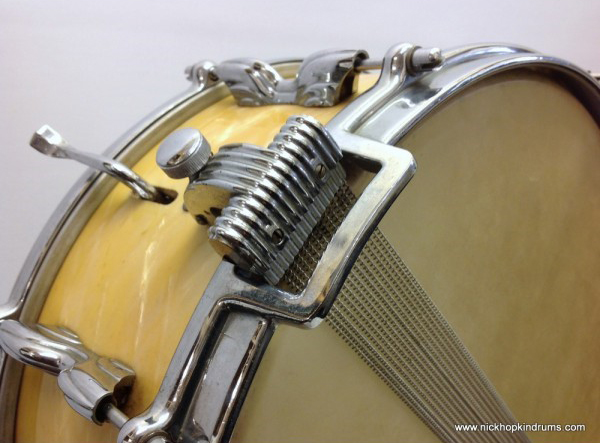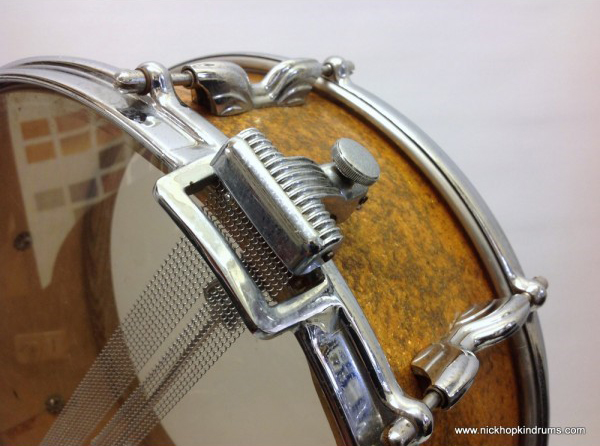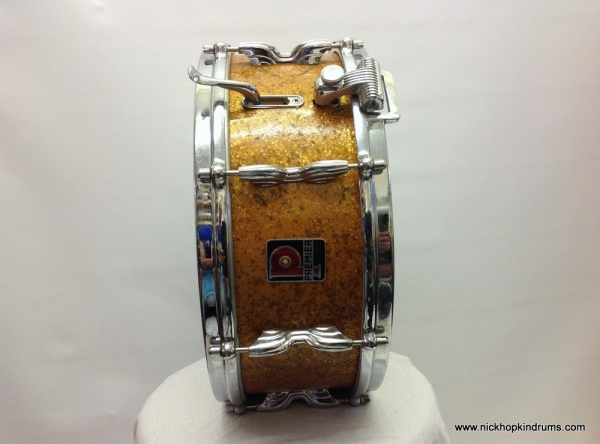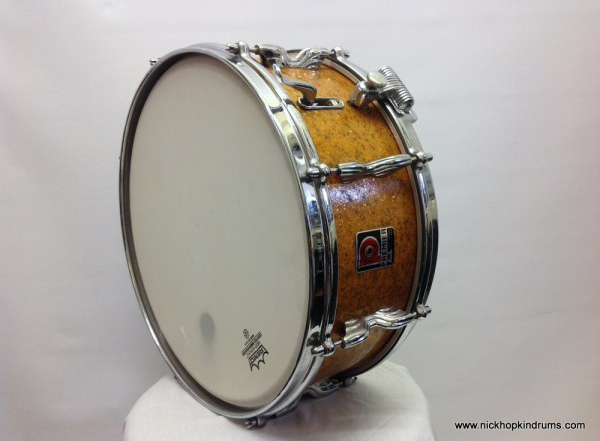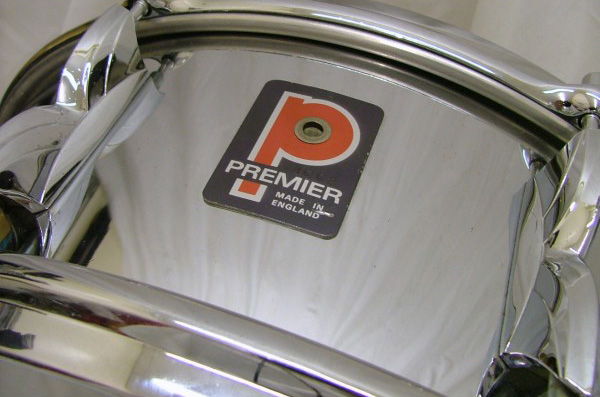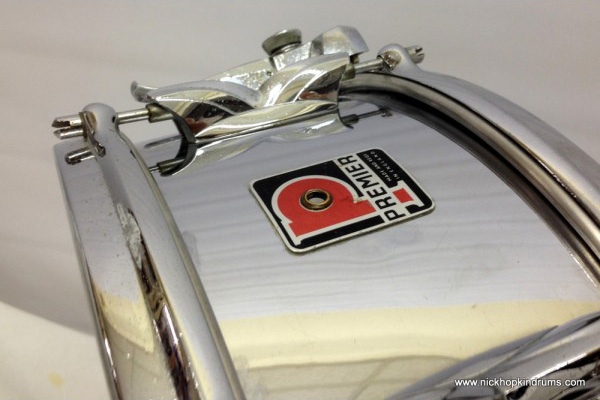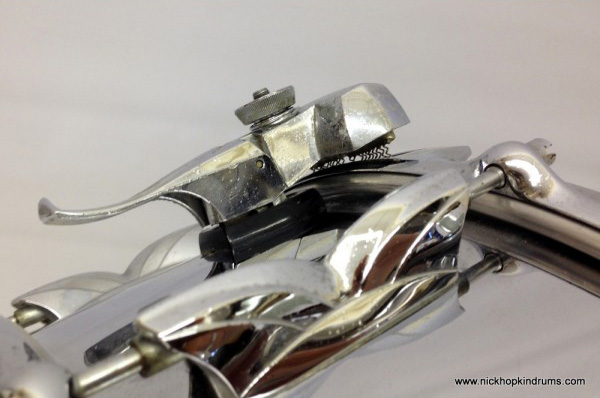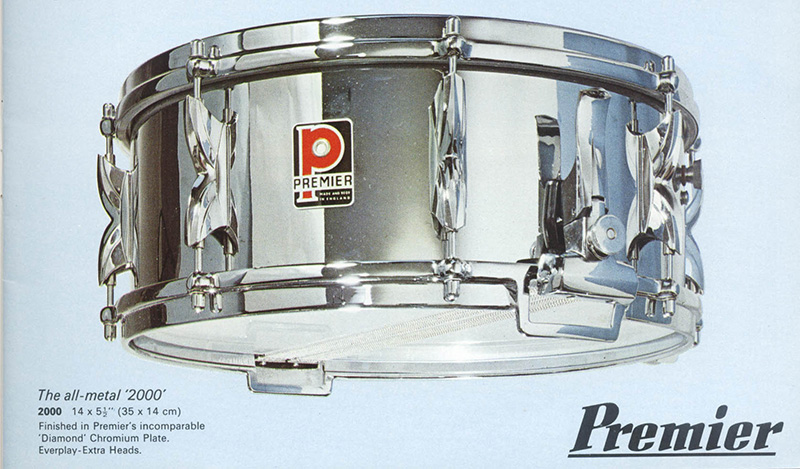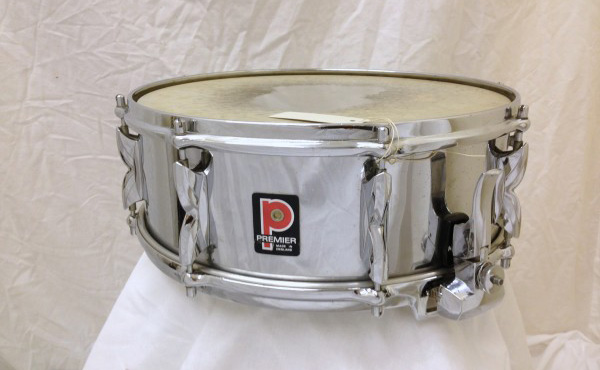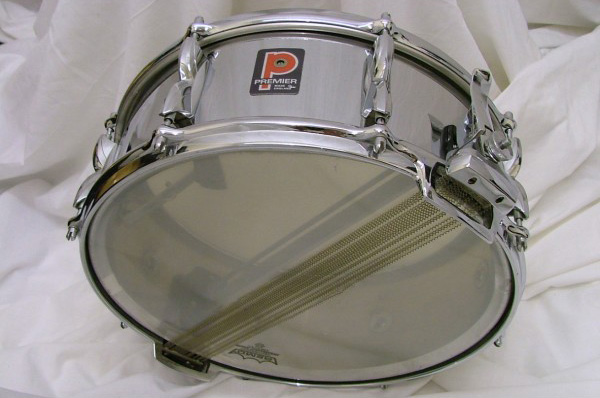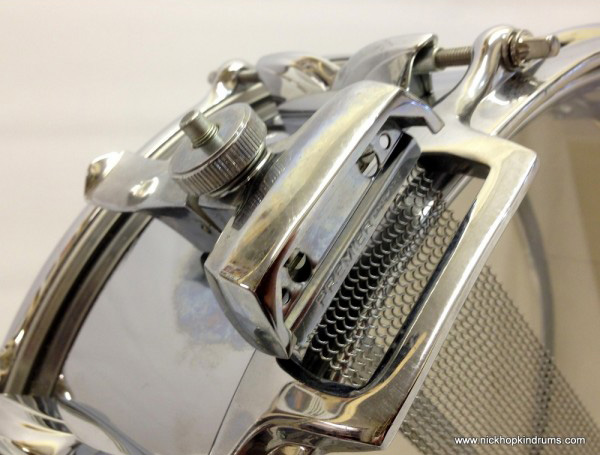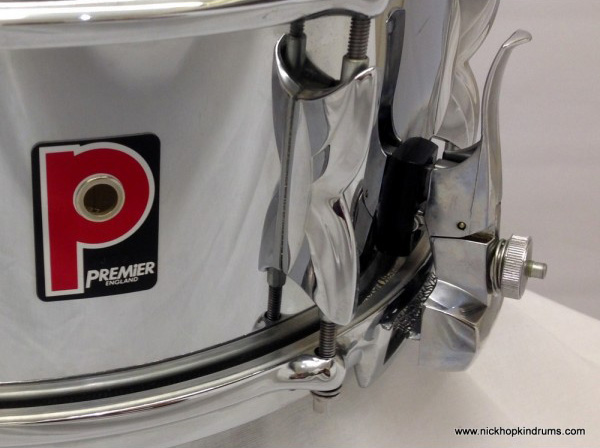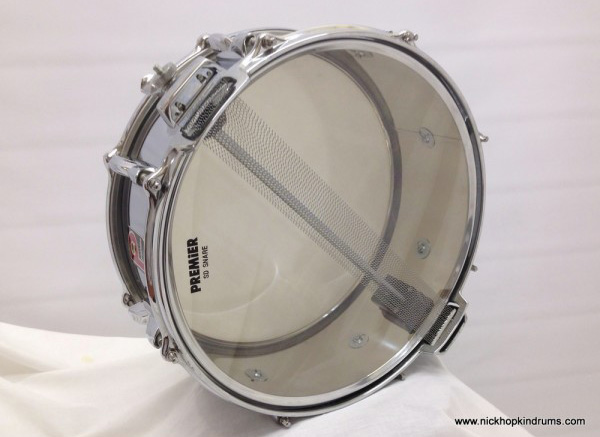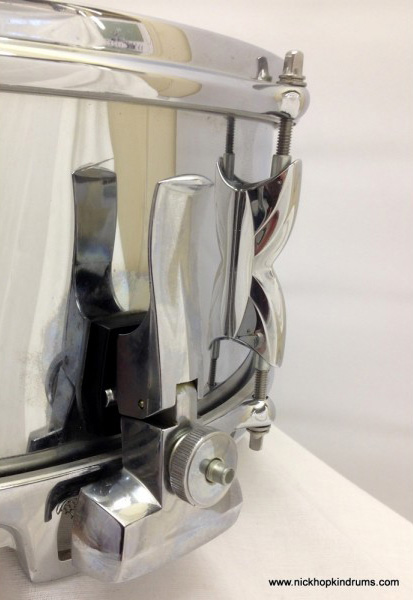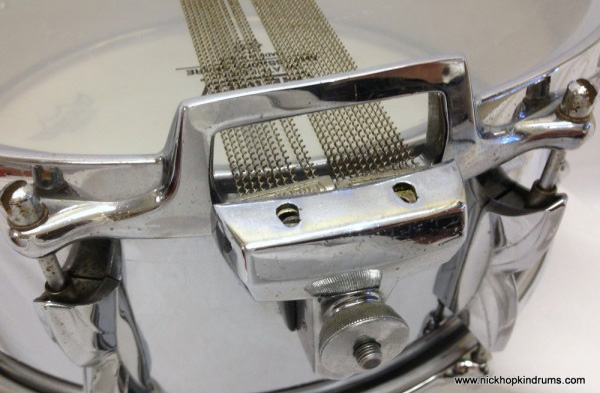Prior to the popular Premier Royal Ace snare drum of the 1960’s, Premier had some other classic snare drums that worked with an internal parallel snare mechanism.
Premier launched the Ace snare drum in the 30’s, which progressed through various design changes over the decades until becoming the Royal Ace in the 1960s. Prior to its final incarnation, In 1958 Premier launched the ‘Super Ace’ in their 1958 catalog as ‘Premiers greatest achievement’. With its exclusive parallel snare mechanism, it boasted perfect response with heads and snare wires at any tension, with absolutely no snare buzz when the wires were thrown off.
The shell had a lever midway, which gave the player control of the internal snare mechanism. Moving the lever up or down effectively switched the snares on or off (via a bar positioned horizontally through the shell, with the butt ends attached). The design of the lever and the butt ends are very art deco, chromium plated to the highest standard, as expected on all vintage Premier. Their chrome really was second to none. The drum featured flush braced lugs, slot tension rods and die cast hoops (with shallower rims than previous drums to ‘allow for faster playing’).
The wooden shelled Super Aces came in several sizes, the standard being 5.5 and 6.5, but with a 4” model available as well as 8”. I’ve never seen an 8” model, but would love to hear one. (If anyone has one, please send some pictures). Their sound was very much like the Royal Ace that I’ve discussed in previous issues; warm with a nice ring from the die cast hoops and a real sensitivity, with the added ability to give a strong backbeat without losing tone. The drums were available in a good selection of colours and finishes; Marine pearl, black pearl, silver, gold, aquamarine & red sparkle, white & black duroplastic.
The drum was also available in a metal shell at both 6.5 and 12”. These were the Concert Ace’s, initially designed for orchestral and symphony work, but quickly becoming one of the most sought after snare drums in the USA in their time. I haven’t seen or played a 12”, which is described in the catalogues as capable of ‘every degree of volume from a whisper to a tremendous roar’. I recently had a 6.5” Concert Ace in the shop; with its chrome over brass shell and die cast hoops, this drum could give any of the other big names 6.5” COB’s a run for their money in my opinion. Its new owner is Matt Helders of the band Arctic Monkeys.
The snare wires on these drums were a single 20 strand wire which hooked onto a bar inside each butt end; some of the earlier models had a slightly different set of wires which screwed directly into the base of the snare butts. (See pictures). These wires are getting hard to come by, but there are people who can build replica sets or repair and modify older wires. Email me if you need some made.
A classic snare drum that went on to become the Royal Ace (which I’ve discussed previously), Premier’s flagship snare drum of the 1960’s. Expect to pay around $400 for a drum in good working condition with original wires.

